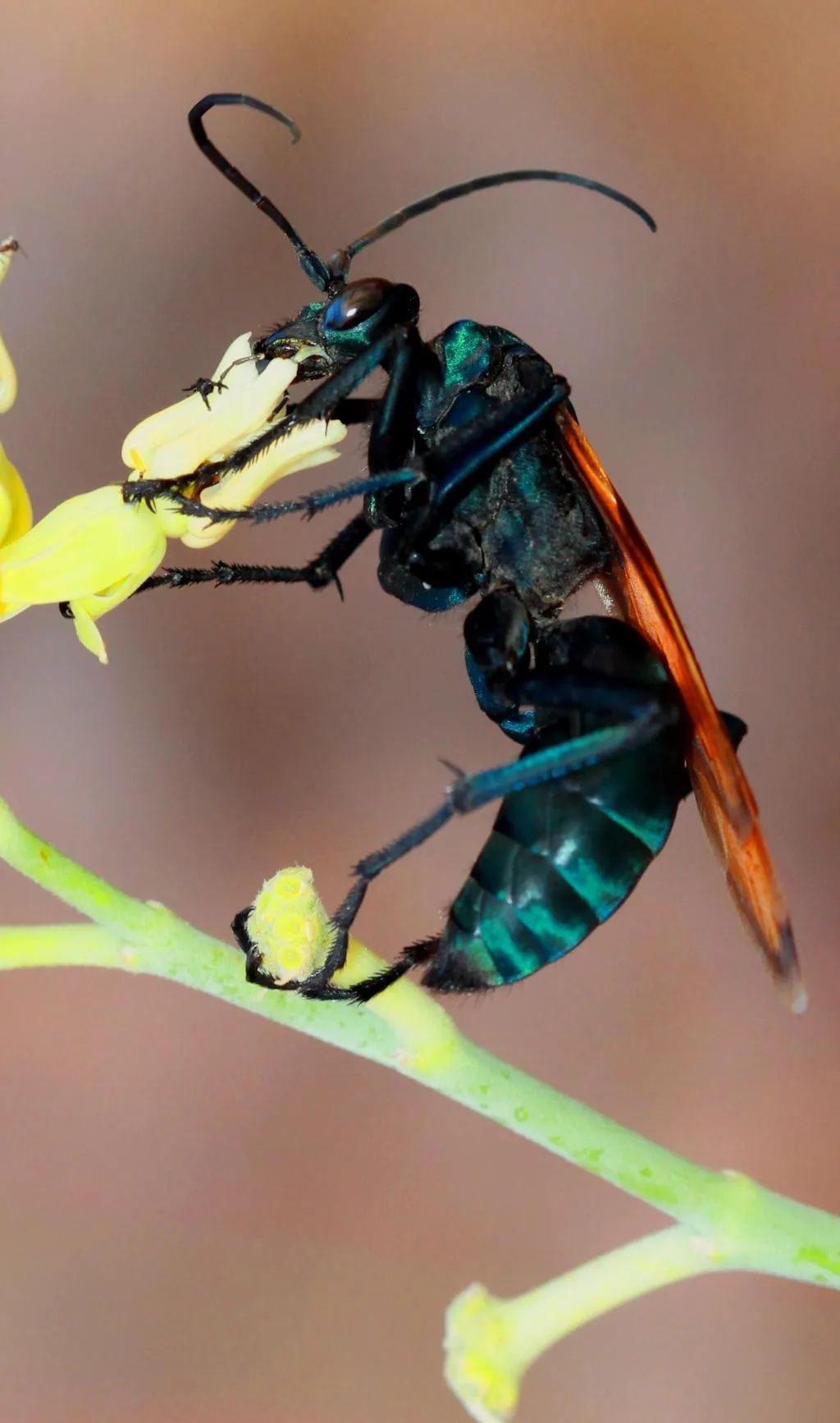Spider Wasp vs Tarantula Hawk Size Comparison
The world of stinging insects and arachnids is a fascinating one, and two creatures often at the forefront of this interest are the spider wasp and the tarantula hawk. Though often used interchangeably, the term “tarantula hawk” specifically refers to a type of spider wasp. Understanding the differences between them is crucial, especially when discussing their characteristics, behaviors, and ecological roles. While they share some similarities, their physical attributes and behaviors set them apart. Let’s delve into the top 5 differences, beginning with size comparison. This is the first distinction that casual observers might notice, as size plays a significant role in their hunting strategies and overall survival.
Spider Wasp Size
Spider wasps, generally, are medium to large in size, varying significantly depending on the species. They are typically smaller than the tarantula hawk, with some species reaching up to 2 inches in length. Their size can influence the type of prey they target, as smaller wasps might go after smaller spiders. The size of spider wasps varies with different species, with some being quite petite and others rather substantial. These variations in size are adaptations to different environmental conditions and the availability of prey. Size also influences the spider wasp’s ability to navigate various terrains and environments where they hunt for their prey, making their size a critical factor in their survival.
Tarantula Hawk Size
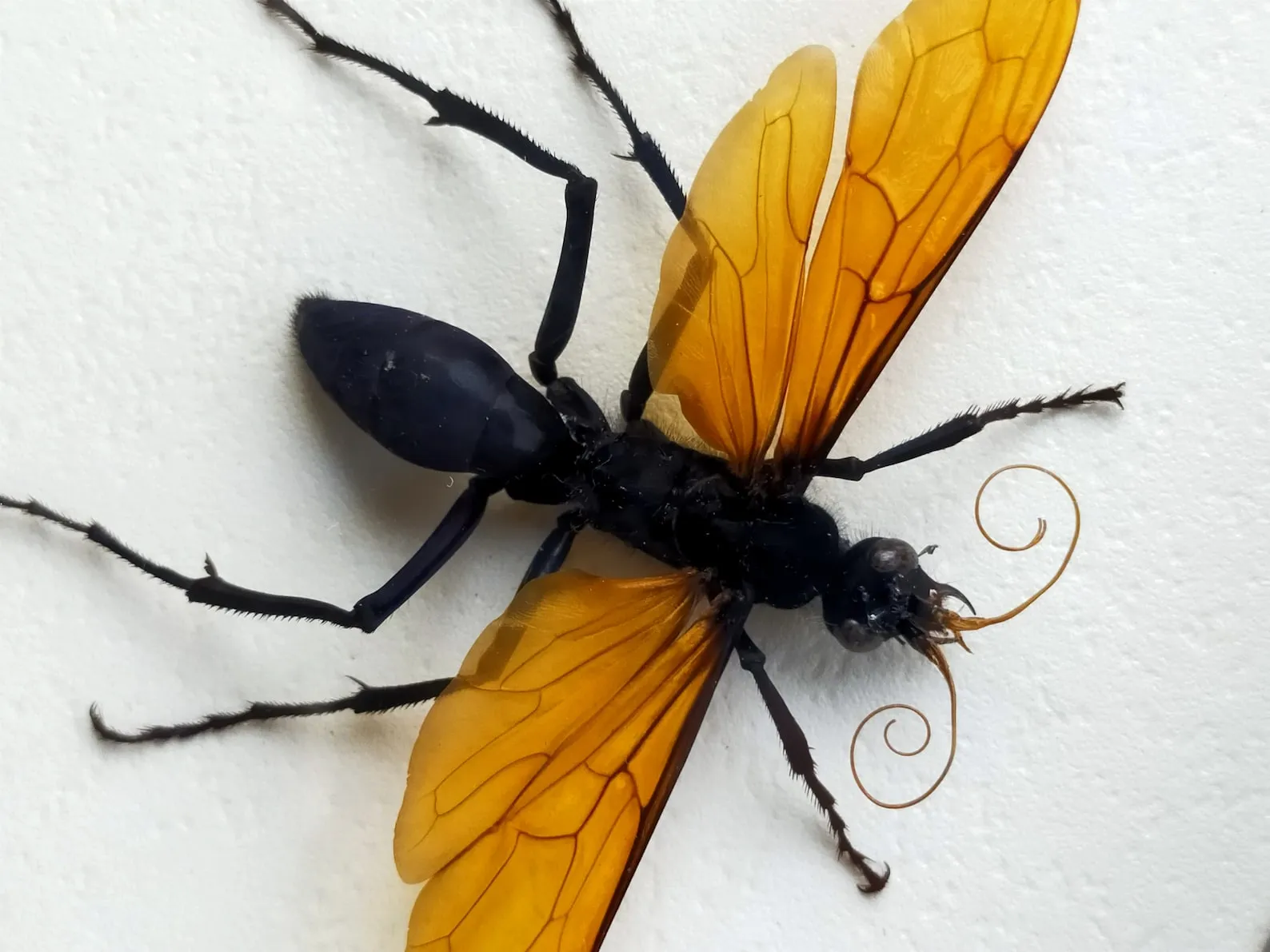
Tarantula hawks, on the other hand, are among the largest wasps in the world. They are notably larger than most spider wasps, with some females reaching up to 2 inches or more in body length, and a wingspan that can extend up to 4 inches. Their imposing size is directly related to their specialized hunting behavior—primarily targeting tarantulas, which are themselves large spiders. This size advantage allows them to subdue and transport these formidable prey items to their nests for their larvae. Because of this, they are often one of the biggest, if not the biggest, insects in their region.
Spider Wasp vs Tarantula Hawk Appearance Differences
Appearance is another key area where these wasps differ. While both have a distinct wasp-like appearance, subtle differences in coloration and body structure can help distinguish between them. The coloration, specifically, plays a role in camouflage and warning signals to potential predators. These aesthetic variations are also related to their environments, where some colors may be more effective for blending in, or for warning off potential threats. Color is also important in mating, where the males and females can identify one another. Observing these characteristics is essential for identifying the specific species and understanding their behaviors.
Spider Wasp Appearance
Spider wasps exhibit a wide range of appearances depending on the species. They can be found in various colors, including black, brown, and even metallic hues like blue or purple. Some species feature stripes or patterns on their abdomen and legs. These variations often serve as camouflage, helping them blend into their environment, or as warning signals to potential predators. Their slender body shape and long legs are adaptations for navigating various terrains while hunting, especially in dense vegetation or on the ground where their prey, spiders, are often located.
Tarantula Hawk Appearance
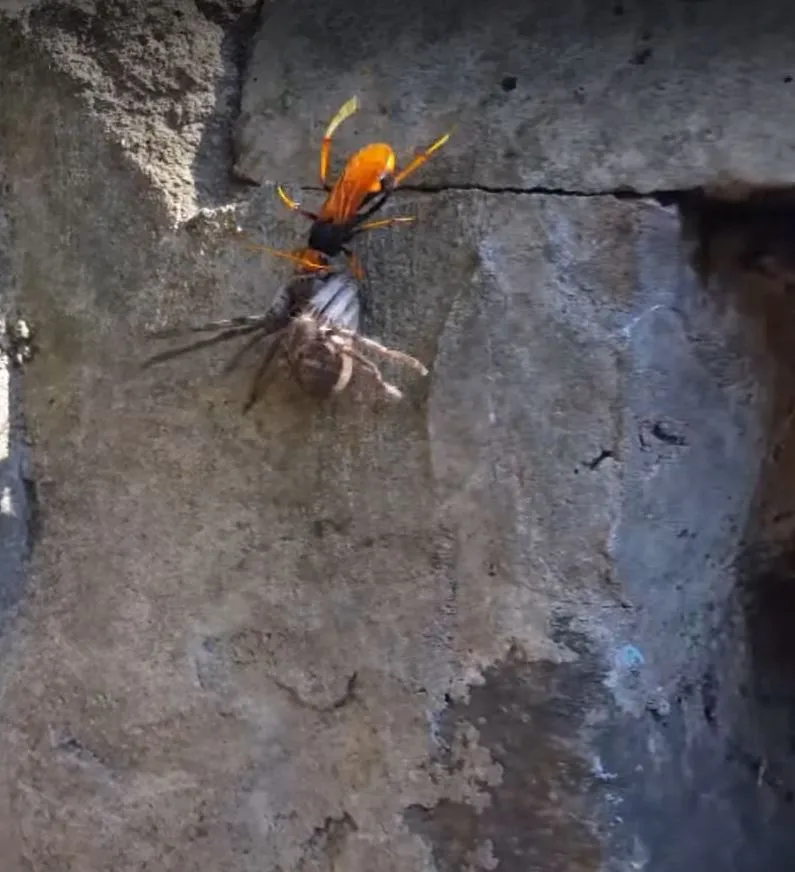
Tarantula hawks are particularly striking in appearance. They are known for their vibrant coloration, typically featuring a black or dark blue body contrasted by orange or reddish wings. This bold coloration serves as a warning signal, indicating their potent sting. The body is usually robust, built to handle the large prey they target. Their large wings are designed for efficient flight, allowing them to search for tarantulas across considerable distances. Their overall appearance, including the shape of their legs and antennae, is designed to aid in their hunting strategies and environmental navigation.
Spider Wasp vs Tarantula Hawk Behavioral Traits
Behavioral differences are perhaps the most fascinating aspect of these creatures. While both spider wasps and tarantula hawks share the hunting of spiders to feed their larvae, their specific hunting techniques, nest-building strategies, and overall life cycles differ significantly. Their behavioral traits are shaped by their environments, prey availability, and evolutionary adaptations. Understanding these behaviors provides insight into their survival mechanisms, interaction with other species, and ecological importance. Moreover, these differences highlight the diversity and specialization within the wasp family.
Spider Wasp Behavior
Spider wasps, in general, display a wide range of hunting behaviors depending on the species. Some species paralyze their prey with a sting and drag them to their nests. Other species build mud nests or utilize existing cavities in which they lay their eggs. They tend to target a variety of spider species, with their prey size and type depending on their own size and preferred habitats. Their nests can be found in various locations, from underground burrows to crevices in buildings. These wasps meticulously care for their larvae, ensuring they have a fresh food supply, which is crucial for their development. The specifics of their behavior are diverse, reflecting the variety within the spider wasp family.
Tarantula Hawk Behavior
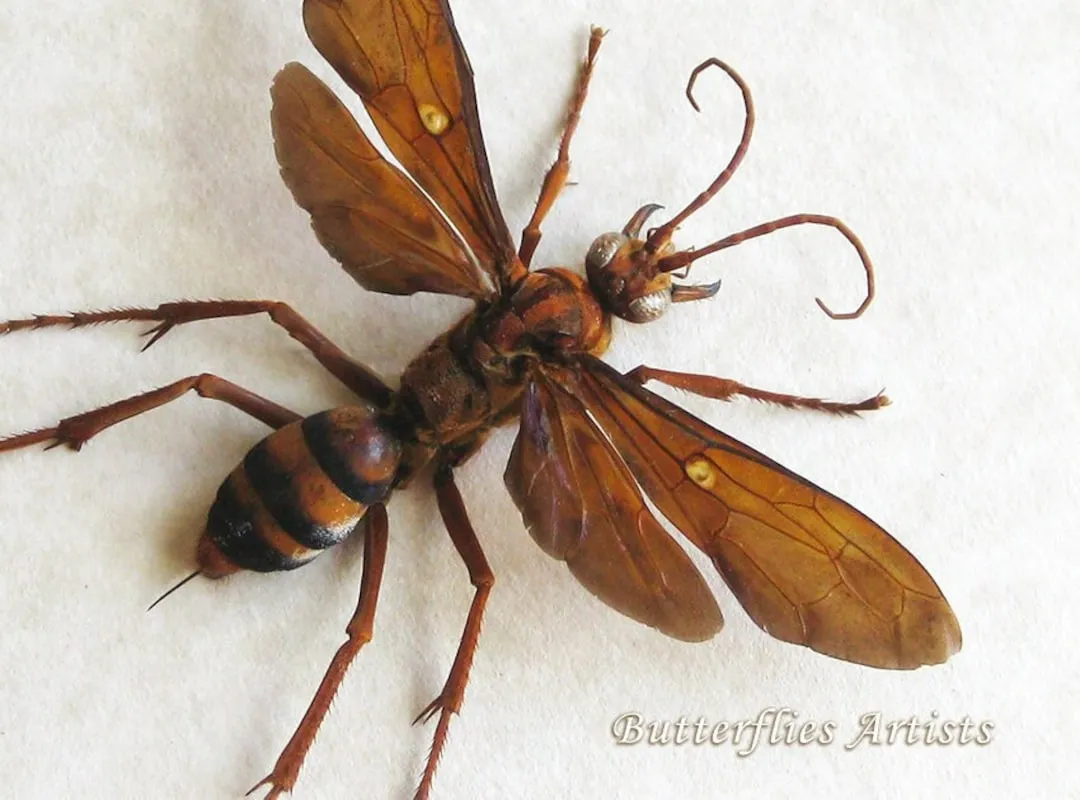
Tarantula hawks exhibit specialized hunting behavior, primarily targeting tarantulas. They are known for their aggressive hunting strategy, often engaging in aerial combat with their massive prey. The female tarantula hawk stings the tarantula, paralyzing it. She then drags the incapacitated spider to a burrow, where she lays a single egg on its abdomen. The wasp larva then hatches and consumes the paralyzed spider, which is still alive during the process, as a food source. This behavior is a striking example of parasitism and shows the tarantula hawks’ specialized adaptation to this specific prey. These hawks demonstrate a very high level of precision and efficiency when hunting.
Spider Wasp vs Tarantula Hawk Geographical Range
Geographical distribution provides valuable context for understanding where these wasps thrive. The habitat directly influences their access to prey, nest-building materials, and overall survival. Their distribution patterns are closely tied to climate conditions, vegetation, and the presence of suitable spider species. By examining their habitats, scientists gain insight into the ecological niches these wasps occupy and the environmental factors that support their existence. This information is essential for conservation efforts and understanding the impact of environmental changes on these species.
Spider Wasp Habitat
Spider wasps are found across a wide range of habitats globally. Their geographical range is broad, with different species adapted to different environments. They can be found in temperate, tropical, and desert regions. They can inhabit various environments, including grasslands, forests, and urban areas. The primary requirement is the presence of spiders that serve as prey. Their ability to adapt to different habitats contributes to their widespread distribution and survival across diverse landscapes. They build nests in diverse locations, from underground burrows to pre-existing cavities, adding to their adaptability.
Tarantula Hawk Habitat
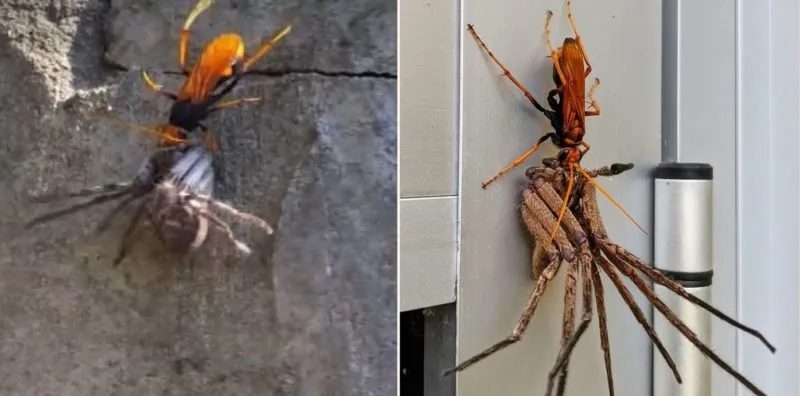
Tarantula hawks are primarily found in the warmer regions of the world, particularly in the southwestern United States, as well as parts of South America and Australia. They prefer arid and semi-arid habitats where tarantulas are abundant. They are well-adapted to these environments. They build nests in the ground or utilize pre-existing burrows. The availability of tarantulas is the most critical factor determining their habitat. They can often be found in areas with sandy or loamy soil that is easy to excavate for their nests. They are also often found in deserts or grasslands.
Spider Wasp vs Tarantula Hawk Sting Potency
The potency of their stings is another key difference between these wasps. The effects of the sting are directly related to the defensive capabilities, the prey they target, and the overall survival strategies. It’s important to understand that the intensity of the sting reflects a specific adaptation to their ecological role. The sting serves not only as a defense mechanism, but also as a tool to paralyze their prey, allowing them to complete the reproductive cycle. This also influences the way they are perceived by humans and other potential threats, making the sting a vital aspect of their existence.
Spider Wasp Sting
Spider wasp stings, while painful, are generally considered less potent than those of the tarantula hawk. The pain from their sting varies depending on the species. The stings are used to paralyze spiders for their larvae to feed upon. While the sting is enough to immobilize their prey, the venom is usually less dangerous to humans. The effect of the sting can range from localized pain and swelling to more severe reactions in sensitive individuals. Their sting is a necessary defense mechanism, but it is not generally considered as medically significant as that of the tarantula hawk.
Tarantula Hawk Sting
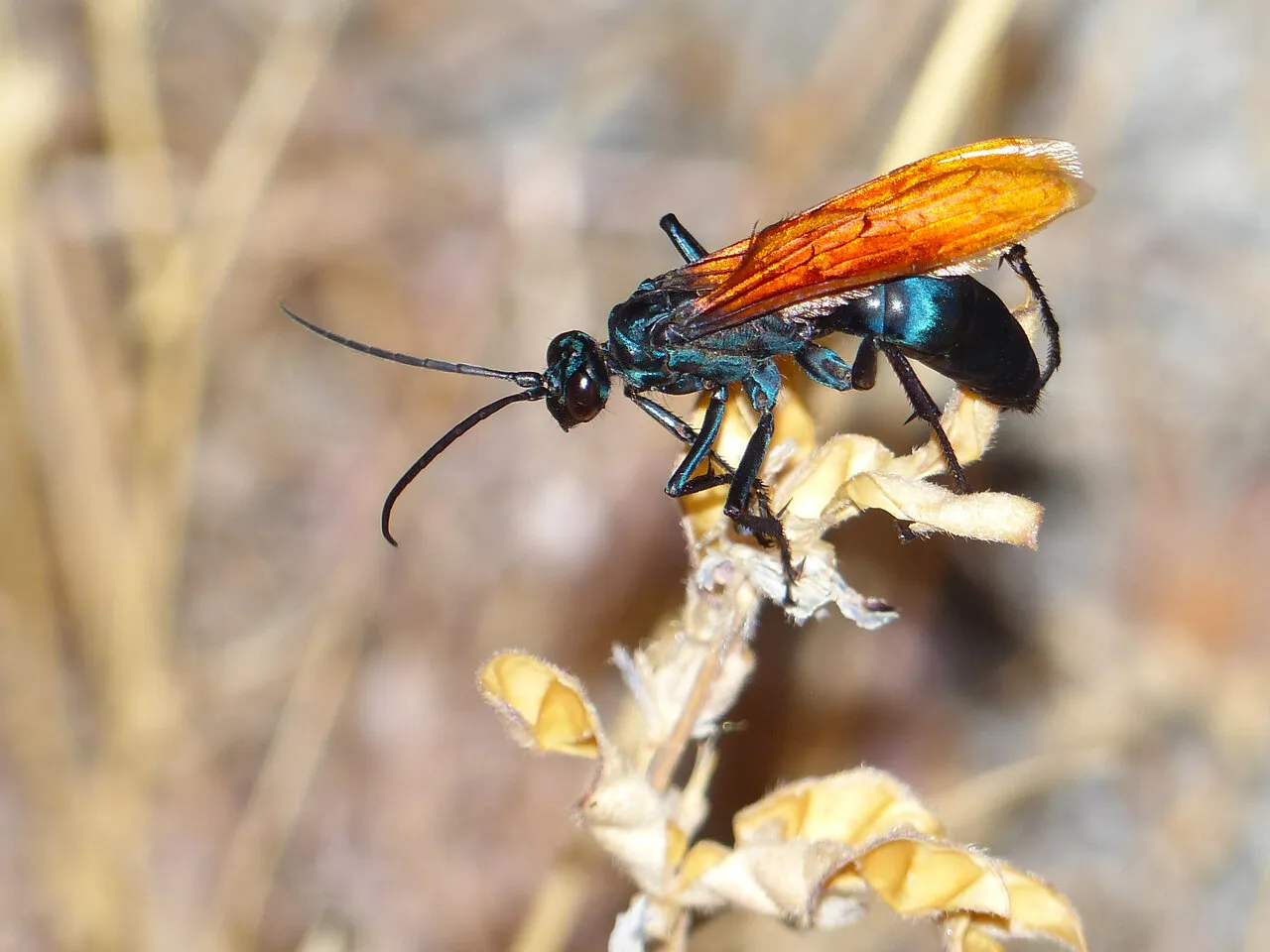
The tarantula hawk is known for having one of the most painful stings in the insect world. The Schmidt sting pain index rates their sting as a level 4, the highest level possible. Their sting is not considered life-threatening to humans. But it causes immediate and intense pain, which can last for several minutes. The venom is specifically designed to paralyze tarantulas. This sting is primarily a defensive mechanism for the wasp and also used in their hunting strategy. The pain is so intense that it is often described as excruciating, though the effects are usually temporary. It is a memorable experience, hence why so many people understand the danger of the tarantula hawk.
In summary, the spider wasp and the tarantula hawk, while often considered the same, exhibit significant differences. These include size, appearance, behavior, geographical range, and sting potency. Understanding these distinctions provides a deeper appreciation for their respective adaptations and roles within their ecosystems. Each wasp’s unique characteristics are essential for its survival and play a vital part in its ecological interactions.
